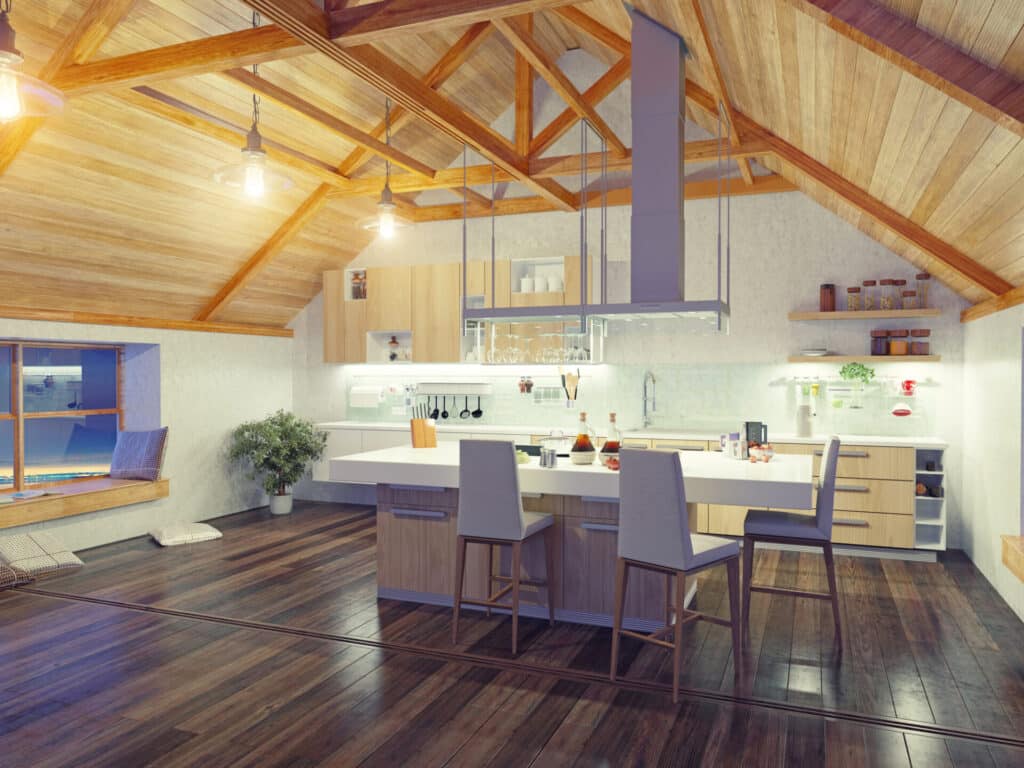
The kitchen is often considered the heart of the home, and having the right lighting in this space is essential. Ambient lighting is a key element in kitchen design as it provides a general, overall illumination that helps to create a cozy and inviting atmosphere. In this article, we will explore the various methods for achieving ambient kitchen lighting.
1. Recessed Lighting:
One of the most popular methods for achieving ambient lighting in the kitchen is through the use of recessed lighting. These fixtures are set up directly into the ceiling and provide a versatile and sleek option for illuminating the space. Recessed lighting can be placed strategically throughout the kitchen to ensure an even distribution of light. It is important to plan the layout of the recessed lighting fixtures carefully to avoid any shadowing or dark spots in the kitchen.
2. Pendant Lighting:
Pendant lighting is another popular choice for ambient kitchen lighting. These hanging fixtures come in a variety of styles and can be a statement piece in the kitchen. Pendant lights are often installed above kitchen islands or dining areas to provide focused task lighting as well as ambient illumination. When choosing pendant lights for your kitchen, consider the size and size of the fixtures in relation to the space. It is important to strike a balance between functionality and aesthetics.
3. Track Lighting:
Track lighting is a flexible option for ambient kitchen lighting as it allows for adjustable fixtures to be mounted on a track system. This type of lighting can be used to feature specific areas or the best part of the kitchen, such as artwork or countertops. Track lighting can also be used to create layers of light in the kitchen by combining different types of fixtures on the track system. This allows for greater control over the overall lighting scheme in the space.
4. Under Cabinet Lighting:
Under cabinet lighting is a practical and effective method for achieving ambient kitchen lighting. These fixtures are installed underneath the upper cabinets and provide a soft, indirect light that helps to illuminate the countertop workspace. This type of lighting is particularly useful for tasks such as food preparation and cooking. There are various options for under cabinet lighting, including LED strips, puck lights, and tape lights. LED lights are a well-liked choice due to their energy efficiency and long lifespan.
5. Cove Lighting:
Cove lighting is a unique method for ambient kitchen lighting that involves installing hidden light fixtures into a recessed area or ledge in the ceiling. This creates a soft and indirect glow that washes over the kitchen space. Cove lighting can be particularly effective in larger kitchens or open-plan layouts where subtle and gentle illumination is desired. This method of lighting can also be used to create visual interest and enhance the architectural elements in the kitchen.
6. Natural Light:
Maximizing the use of natural light is an important consideration when designing the ambient lighting in a kitchen. Windows can help to flood the space with natural light during the day, creating a bright and airy atmosphere. It is important to take into account the orientation and position of the windows in order to optimize the natural light. Consider using light-colored or reflective materials for the walls, ceiling, and countertops to further enhance the effect of natural light in the space.
7. Dimmers and Lighting Controls:
Incorporating dimmers and lighting controls into the ambient lighting design of the kitchen allows for greater flexibility and control over the lighting scheme. Dimmers allow for the intensity of the light to be adjusted to create different moods and atmospheres in the space. Lighting controls, such as smart home systems, can provide the ability to control the lighting from a central location or through a mobile device. This allows for simple customization of the lighting to suit different activities and occasions.
Light Layering:
Achieving a well-balanced and layered lighting design is important when it comes to ambient kitchen lighting. Layered lighting involves combining different types of fixtures and lighting techniques to create a dynamic and harmonious illumination in the space. This can include a combination of overhead fixtures, task lighting, accent lighting, and ambient lighting. By incorporating multiple layers of light, you can ensure that the kitchen is evenly lit and that specific areas are highlighted and emphasized.
In conclusion, ambient lighting is a crucial element in kitchen design as it provides a general, overall illumination that creates a warm and inviting atmosphere. The various methods for achieving ambient kitchen lighting include recessed lighting, pendant lighting, track lighting, under cabinet lighting, cove lighting, maximizing natural light, incorporating dimmers and lighting controls, and implementing light layering techniques. By carefully considering these methods and incorporating them into the kitchen design, you can create a space that is both functional and aesthetically pleasing.
